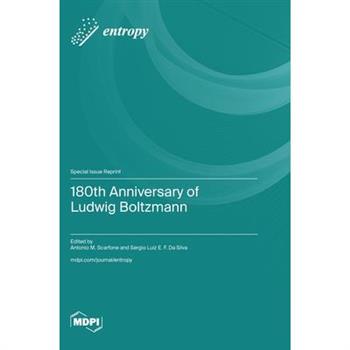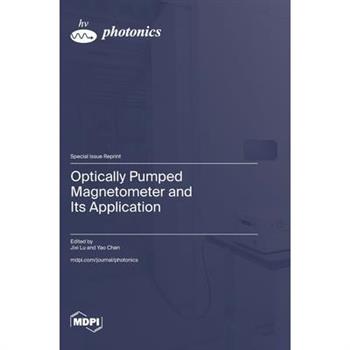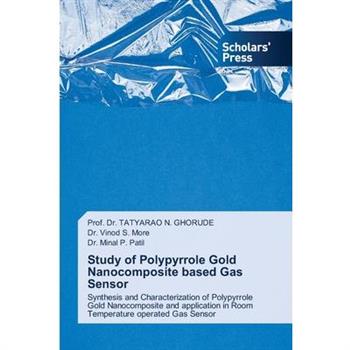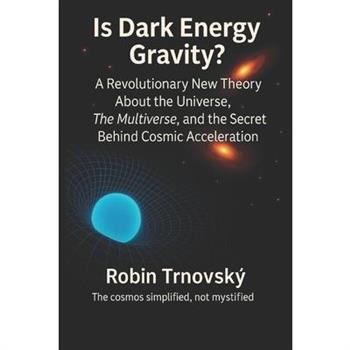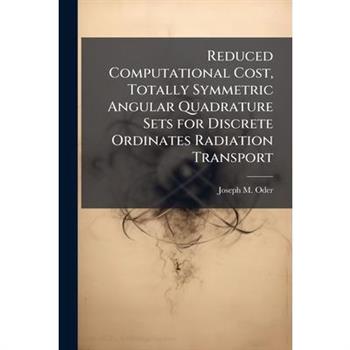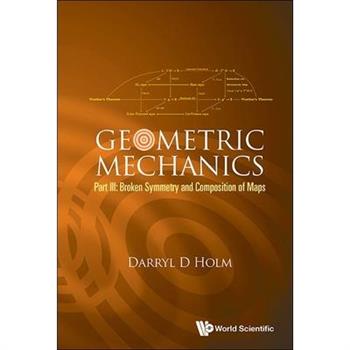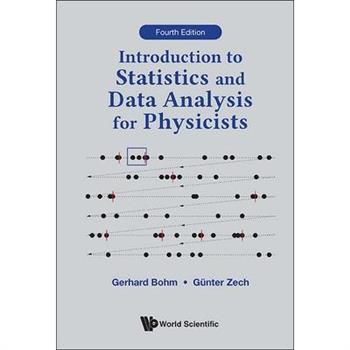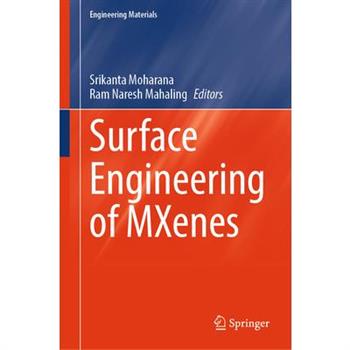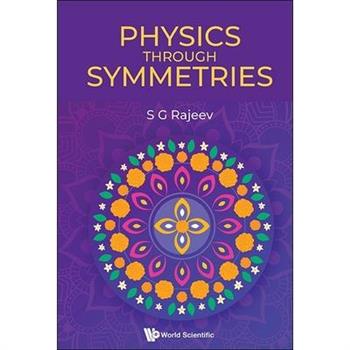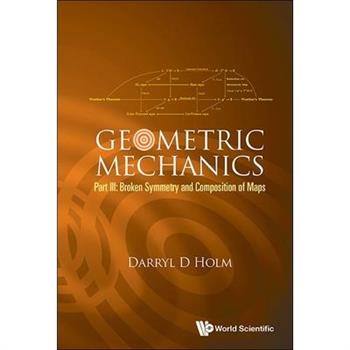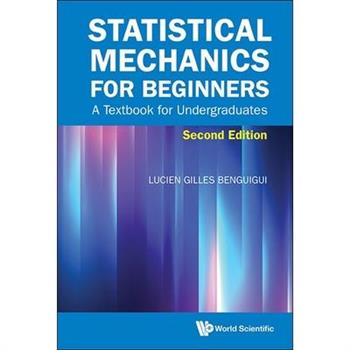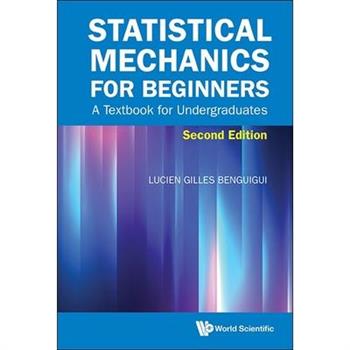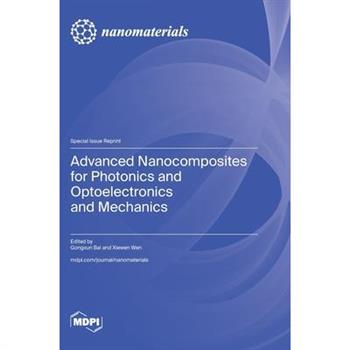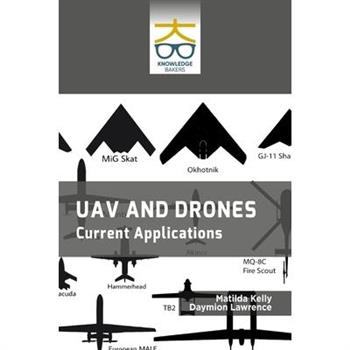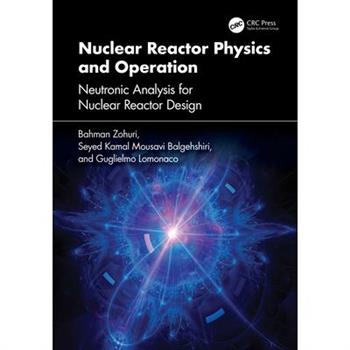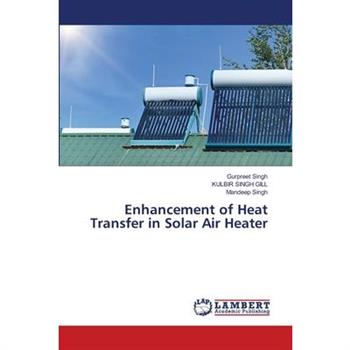Reduction Tables For The Lick Observatory
"Reduction Tables For The Lick Observatory" is a valuable resource for astronomers and researchers. This work by George Cary Comstock provides essential tables and data necessary for reducing astronomical observations made at the Lick Observatory. These meticulously compiled tables assist in correcting for systematic errors and instrumental effects, ensuring the accuracy of astronomical measurements. The book offers a detailed guide to the reduction process, making it an indispensable tool for anyone involved in observational astronomy and astrophysics. Its enduring relevance lies in its contribution to the precision and reliability of astronomical data, continuing to inform and support scientific inquiry in the field.This work has been selected by scholars as being culturally important, and is part of the knowledge base of civilization as we know it. This work was reproduced from the original artifact, and remains as true to the original work as possible. Therefore, you will see the original copyright references, library stamps (as most of these works have been housed in our most important libraries around the world), and other notations in the work.This work is in the public domain in the United States of America, and possibly other nations. Within the United States, you may freely copy and distribute this work, as no entity (individual or corporate) has a copyright on the body of the work.As a reproduction of a historical artifact, this work may contain missing or blurred pages, poor pictures, errant marks, etc. Scholars believe, and we concur, that this work is important enough to be preserved, reproduced, and made generally available to the public. We appreciate your support of the preservation process, and thank you for being an important part of keeping this knowledge alive and relevant.
Position-line Star Tables
"Position-line Star Tables" by H.B. Goodwin is a practical guide designed for navigators seeking to determine a ship's position using celestial observations. This resource offers a method of fixing position by reducing observations to the meridian and prime vertical, eliminating the need for logarithmic calculations. It serves as a valuable tool for mariners, providing essential data in a readily accessible format to simplify the process of celestial navigation. This book caters to those who prefer direct, arithmetical solutions in navigation. It emphasizes efficient and accurate position determination, making it a crucial reference for anyone involved in maritime navigation or interested in the history and techniques of seafaring.This work has been selected by scholars as being culturally important, and is part of the knowledge base of civilization as we know it. This work was reproduced from the original artifact, and remains as true to the original work as possible. Therefore, you will see the original copyright references, library stamps (as most of these works have been housed in our most important libraries around the world), and other notations in the work.This work is in the public domain in the United States of America, and possibly other nations. Within the United States, you may freely copy and distribute this work, as no entity (individual or corporate) has a copyright on the body of the work.As a reproduction of a historical artifact, this work may contain missing or blurred pages, poor pictures, errant marks, etc. Scholars believe, and we concur, that this work is important enough to be preserved, reproduced, and made generally available to the public. We appreciate your support of the preservation process, and thank you for being an important part of keeping this knowledge alive and relevant.
Reduction Tables For The Lick Observatory
"Reduction Tables For The Lick Observatory" is a valuable resource for astronomers and researchers. This work by George Cary Comstock provides essential tables and data necessary for reducing astronomical observations made at the Lick Observatory. These meticulously compiled tables assist in correcting for systematic errors and instrumental effects, ensuring the accuracy of astronomical measurements. The book offers a detailed guide to the reduction process, making it an indispensable tool for anyone involved in observational astronomy and astrophysics. Its enduring relevance lies in its contribution to the precision and reliability of astronomical data, continuing to inform and support scientific inquiry in the field.This work has been selected by scholars as being culturally important, and is part of the knowledge base of civilization as we know it. This work was reproduced from the original artifact, and remains as true to the original work as possible. Therefore, you will see the original copyright references, library stamps (as most of these works have been housed in our most important libraries around the world), and other notations in the work.This work is in the public domain in the United States of America, and possibly other nations. Within the United States, you may freely copy and distribute this work, as no entity (individual or corporate) has a copyright on the body of the work.As a reproduction of a historical artifact, this work may contain missing or blurred pages, poor pictures, errant marks, etc. Scholars believe, and we concur, that this work is important enough to be preserved, reproduced, and made generally available to the public. We appreciate your support of the preservation process, and thank you for being an important part of keeping this knowledge alive and relevant.
An Account Of A Surprizing Meteor, Seen In The Air, March The 6th, 1715/16, At Night
In "An Account Of A Surprizing Meteor, Seen In The Air, March The 6th, 1715/16, At Night," William Whiston meticulously documents a celestial event that captivated observers in the early 18th century. This account provides both a detailed description of the meteor based on Whiston's direct observations and a historical overview of similar meteoric phenomena recorded in earlier times.Whiston's work offers invaluable insights into the scientific understanding and public perception of astronomical events during the period. The book captures the sense of wonder and scientific curiosity that marked the era, making it a compelling read for anyone interested in the history of science and astronomy.This work has been selected by scholars as being culturally important, and is part of the knowledge base of civilization as we know it. This work was reproduced from the original artifact, and remains as true to the original work as possible. Therefore, you will see the original copyright references, library stamps (as most of these works have been housed in our most important libraries around the world), and other notations in the work.This work is in the public domain in the United States of America, and possibly other nations. Within the United States, you may freely copy and distribute this work, as no entity (individual or corporate) has a copyright on the body of the work.As a reproduction of a historical artifact, this work may contain missing or blurred pages, poor pictures, errant marks, etc. Scholars believe, and we concur, that this work is important enough to be preserved, reproduced, and made generally available to the public. We appreciate your support of the preservation process, and thank you for being an important part of keeping this knowledge alive and relevant.
180th Anniversary of Ludwig Boltzmann
Entropy is publishing a Special Issue to celebrate the 180th anniversary of Ludwig Boltzmann's birth, commemorating his foundational contributions to statistical mechanics and thermodynamics. Boltzmann revolutionized physics by introducing statistical methods to describe molecular behavior, formulating the H-theorem, and establishing the profound link between entropy and probability. His work laid the groundwork for modern kinetic theory, transport phenomena, and equilibrium statistical mechanics, with far-reaching implications across physics, chemistry, biology, engineering, and social sciences. This collection features high-quality research and review articles exploring Boltzmann's enduring influence, including advances in statistical physics, complex systems, and machine learning, as well as critical perspectives on the historical and theoretical evolution of the field. Contributions address fundamental theories and applied interdisciplinary topics, reflecting the broad impact of Boltzmann's ideas.
Optically Pumped Magnetometer and Its Application
The optically pumped magnetometer (OPM) is a class of atomic devices that rely on the measurement of Larmor precession of an atomic spin ensemble in a magnetic field. They need the specific frequency light to complete the pumping and detection process. OPMs typically work under the Earth's magnetic field or a limited field. When operating in near-zero field, they can realize the spin-exchange relaxation-free (SERF) regime, thereby promoting a substantial increase in sensitivity. At present, OPMs have been widely used in magnetoencephalography, magnetocardiography, geomagnetic detection, and inertia measurement (comagnetometer). There are a large number of researchers engaged in the study of relevant mechanisms, devices, technologies, and applications. More importantly, supported by MEMS technology and micro/nano optics, OPMs have the potential to move toward chip-scale sensors. This special issue contains some latest developments in OPMs and related areas. We hope the reprint can provide valuable references for researchers in the related field.
Study of Polypyrrole Gold Nanocomposite based Gas Sensor
This book focuses on the development of room-temperature operated gas sensors made of PPy composites for the detection of hazardous gases like ammonia, with potential applications in biomedicine and industry. A significant advancement in gas sensor technology is In-situ chemical oxidative polymerization of pyrrole using novel dopant and oxidant. The investigation also covers the fabrication of metal oxide and noble element nanoparticles, screen-printing thin films on interdigitated electrodes, and in-situ chemical polymerization as a means of forming nanocomposite formation. At room temperature, a number of characteristics of the sensors and photocatalysts are examined, including sensitivity, selectivity, and stability over time. Several techniques are employed in the characterization of the powdered nanocomposite, such as FTIR spectroscopy for the chemical composition of smaller particles, UV-Visible spectroscopy for band gap analysis, XRD for crystal structure determination, and SEM as well as TEM for structural and morphological analysis. A brief overview and several in-depth chapters on the use of poisonous gas sensors are provided in this book.
The Essential Einstein: Scientific Writings
The ultimate collection of Einstein's scientific writings on everything from statistical mechanics to general relativity The Essential Einstein: Scientific Writings presents Einstein's most important physics papers, spanning his groundbreaking contributions to statistical mechanics, quantum theory, and relativity as well as his ambitious yet ultimately unrealized attempts at a general unified field theory. This incisive collection contains works that profoundly influenced the trajectory of modern science. Each piece serves not only as a reflection of his intellectual rigor and creativity but also as a cornerstone of contemporary scientific thought. The Essential Einstein is a two-volume compendium offering general readers and specialists alike a comprehensive resource on the pivotal writings of Albert Einstein. Organized chronologically by leading authorities on Einstein and his work, this collection illuminates the evolution of Einstein's scientific and humanistic ideas throughout his life. Each selection is accompanied by explanatory notes that detail the work's background and significance. Together with The Essential Einstein: Public Writings, this authoritative collection invites a deeper engagement with the intellectual legacy and enduring influence of Albert Einstein.
Is Dark Energy Gravity?
What if the universe isn't alone - and what we call dark energy is actually gravity reaching us from beyond?Dark energy is the greatest enigma in modern science. Said to make up 72% of everything that exists, it's believed to drive the accelerating expansion of the cosmos - yet no one truly knows what it is, where it comes from, or why it exists.In this provocative and visionary book, Robin Trnovsk羸 introduces SESEMI (Sexual System of Multiverse), a bold new theory that challenges the foundations of cosmology. According to SESEMI, our universe is part of a vast, gravitationally entangled multiverse - and what we perceive as dark energy may in fact be inter-universal gravity pulling from beyond.From stars that seem older than time to galaxies forming too fast, from cosmic asymmetries to the limits of physics itself - this book reinterprets the universe's great mysteries, not by adding new forces, but by reexamining the one we already know: gravity.Is gravity not just a force within our universe - but a bridge between worlds?Whether you're a science enthusiast, a seeker of cosmic truth, or someone who dares to ask "what if?", Is Dark Energy Gravity? offers a captivating journey to the edge of known science - and beyond.The book opens with a concise, enchanting and unprecedented history of astronomy - from ancient stargazers to modern theories of gravity, the Big Bang, dark matter, string theory, the multiverse, and dark energy - showing how our cosmic perspective has evolved and how much still remains unknown.Reality encompasses dimensions beyond the reach of our senses and therefore requires the power of reason to approach its underlying essence.
Fusion Energetics
Embark on an unparalleled journey into the very heart of fusion energy, an endeavor poised to redefine humanity's power landscape. While the promise of clean, abundant energy from stellar processes on.Earth is immense, it hinges critically on one of the most formidable scientific and engineering challenges: the resilience of materials in the face of extreme irradiation. "Fusion Energetics: Quantifying Particle Emissions for Material Characterization Physics" stands as the definitive guide to navigating this complex interplay, offering a meticulously detailed exploration of how the energetic particles born from fusion reactions interact with, and fundamentally alter, reactor components.This authoritative work commences by laying the essential foundation, delving into the Introduction to Fusion Processes. Here, the Plasma Confinement Fundamentals are rigorously explained, showcasing the intricate physics required to sustain superheated plasma. It then progresses to dissect the diverse Fusion Reaction Mechanisms, meticulously detailing the isotopic pathways, the immense energy release, and, crucially, the spectrum of emitted particles-neutrons, alpha particles, and more-that dictate the subsequent material response.This foundational understanding is not merely theoretical; it establishes the vital link between the core physics of fusion and the subsequent material characterization challenges.The narrative seamlessly transitions into. Emission Diagnostics in Fusion, unveiling the sophisticated arsenal of tools required to accurately measure and interpret these energetic particle emissions. Techniques such as Neutron Emission Spectroscopy are thoroughly examined for their capacity to infer critical plasma parameters like temperature and density, while.Gamma-Ray Diagnostics offer insights into plasma composition and reaction rates. The detection of Charged Particle Detection methodologies further illuminates the behavior of energetic ions within the plasma. This section is paramount, demonstrating how these precise measurements provide the indispensable data to validate and enhance fusion reactor designs, particularly concerning the delicate interface between plasma and structural materials.Fusion Energetics" is more than just a book; it is an essential toolkit for anyone dedicated to the realization of fusion power. It consolidates disparate fields-nuclear physics, plasma diagnostics, materials science, and computational modeling-into a singular, coherent narrative, bridging the gap between theoretical understanding and practical application. It is an indispensable resource for researchers, engineers, and advanced students striving to overcome the materials challenges inherent in building the fusion reactors of tomorrow. This comprehensive work is meticulously structured to provide both foundational knowledge and cutting-edge insights, preparing its readers to contribute meaningfully to the world's most ambitious energy project. Unlock the future of energy, and forge ahead into fusion's material frontier: Secure your intellectual bedrock today!
Detection of Special Nuclear Material With High Purity Germanium and Mercuric Iodide Gamma Detectors
The Defense Threat Reduction Agency (DTRA) contracted for two gamma radiation detectors: mercuric iodide (HgI2) and electromechanically cooled (EMC) high purity germanium (HPGe) to support arms control inspection efforts. This project investigated whether these detectors could measure the quality and quantity of special nuclear material (SNM), particularly Pu-239 for the treaty verification mission. The project investigated two areas of detector capabilities: 1) HgI2 and HPGe detector performance necessary to characterize the quality of plutonium and the presence of shielding materials and 2) HgI2 and EMC HPGe detector performance degradation by high noise levels and EMC HPGe detector performance degradation caused by electromechanical-cooling. The first area studied the response functions of each of the detectors necessary to meet the detection objectives: measure the Pu-239/Pu 240 ratio to identify weapons grade plutonium and to identify a phony weapon. The second area of detector performance evaluated was the EMC HPGe detector's cooling capabilities and its effect on the performance of the detector. The results show that neither of the detectors was ideally capable of supporting DTRA's requirements. The HgI2 detector did not have sufficient efficiency or resolution to distinguish between Weapon Grade and Reactor Grade Plutonium. The EMC system suffered from grounding problems that degraded the resolution and efficiency. An initial study, evaluating the ability of detectors to determine the presence of a simulated tamper within the SNM physics package, showed great promise for identifying phony weapons.This work has been selected by scholars as being culturally important, and is part of the knowledge base of civilization as we know it. This work was reproduced from the original artifact, and remains as true to the original work as possible. Therefore, you will see the original copyright references, library stamps (as most of these works have been housed in our most important libraries around the world), and other notations in the work.This work is in the public domain in the United States of America, and possibly other nations. Within the United States, you may freely copy and distribute this work, as no entity (individual or corporate) has a copyright on the body of the work.As a reproduction of a historical artifact, this work may contain missing or blurred pages, poor pictures, errant marks, etc. Scholars believe, and we concur, that this work is important enough to be preserved, reproduced, and made generally available to the public. We appreciate your support of the preservation process, and thank you for being an important part of keeping this knowledge alive and relevant.
Reduced Computational Cost, Totally Symmetric Angular Quadrature Sets for Discrete Ordinates Radiation Transport
Several new quadrature sets for use in the discrete ordinates method of solving the Boltzmann neutral particle transport equation are derived. These symmetric quadratures extend the traditional symmetric quadratures by allowing ordinates perpendicular to one or two of the coordinate axes. Comparable accuracy with fewer required ordinates is obtained. Quadratures up to seventh order are presented. The validity and efficiency of the quadratures is then tested and compared with the LQn level symmetric quadratures relative to a Monte Carlo benchmark solution. The criteria for comparison include current through the surface, scalar flux at the surface, volume average scalar flux, and time required for convergence. Appreciable computational cost was saved when used in an unstructured tetrahedral cell code using highly accurate characteristic methods. However, no appreciable savings in computation time was found using the new quadratures compared with traditional Sn methods on a regular Cartesian mesh using the standard diamond difference method. These quadratures are recommended for use in three-dimensional calculations on an unstructured mesh.This work has been selected by scholars as being culturally important, and is part of the knowledge base of civilization as we know it. This work was reproduced from the original artifact, and remains as true to the original work as possible. Therefore, you will see the original copyright references, library stamps (as most of these works have been housed in our most important libraries around the world), and other notations in the work.This work is in the public domain in the United States of America, and possibly other nations. Within the United States, you may freely copy and distribute this work, as no entity (individual or corporate) has a copyright on the body of the work.As a reproduction of a historical artifact, this work may contain missing or blurred pages, poor pictures, errant marks, etc. Scholars believe, and we concur, that this work is important enough to be preserved, reproduced, and made generally available to the public. We appreciate your support of the preservation process, and thank you for being an important part of keeping this knowledge alive and relevant.
Operational Defenses Through Weather Control in 2030
The United States needs to incorporate the defense against directed energy weapons with the same intensity used developing anti-ballistic missile defenses. One of the major drawbacks to optical or directed energy systems is the inability to penetrate clouds or dense fog. Advances in technology are beginning to bring weather phenomena under our control. Greatly increased computing power and micronized delivery systems will allow us to create specific perturbations in local atmospheric conditions. These perturbations allow for the immediate and lasting ability to create localized fog or stratus cloud formations shielding critical assets against attack from energy based weapons. The future of nanotechnology will enable creation of stratus cloud formations to defeat DEW and optically targeted attacks on United Sates assets. The solution the weather control problem involves networked miniature balloons feeding and receiving data from a four-dimensional variation (4d-Var) computer model through a sensor and actor network. A network of diamond-walled balloons enters the area to be changed and then both measures and affects localized temperature and vapor content. This system effectively shortens the control loop of an atmospheric system to the point it can be "managed." The capabilities in the diamond-walled balloons are based on the future of nanotechnology.This work has been selected by scholars as being culturally important, and is part of the knowledge base of civilization as we know it. This work was reproduced from the original artifact, and remains as true to the original work as possible. Therefore, you will see the original copyright references, library stamps (as most of these works have been housed in our most important libraries around the world), and other notations in the work.This work is in the public domain in the United States of America, and possibly other nations. Within the United States, you may freely copy and distribute this work, as no entity (individual or corporate) has a copyright on the body of the work.As a reproduction of a historical artifact, this work may contain missing or blurred pages, poor pictures, errant marks, etc. Scholars believe, and we concur, that this work is important enough to be preserved, reproduced, and made generally available to the public. We appreciate your support of the preservation process, and thank you for being an important part of keeping this knowledge alive and relevant.
The Essential Einstein: Public Writings
The ultimate collection of Einstein's public writings on everything from religion and art to pacifism and the atomic bomb The Essential Einstein: Public Writings presents a rich selection of Einstein's humanistic writings drawn from a diverse array of materials he sanctioned for publication during his lifetime. Distinct from previous collections, this incisive book presents previously excerpted works in their entirety, including key articles, lectures, and speeches. These writings delve into significant topics such as philosophy, religion, and art, but also specific important and often contentious issues in education, politics, disarmament, pacifism, international cooperation, the atomic bomb, and Zionism. Among these works, readers will find the brilliant "Notes for an Autobiography" alongside selected popular science articles, which offer a profound understanding of Einstein's ethical and political worldview. The Essential Einstein is a two-volume compendium offering general readers and specialists alike a comprehensive resource on the pivotal writings of Albert Einstein. Organized chronologically by leading authorities on Einstein and his work, this collection illuminates the evolution of Einstein's scientific and humanistic ideas throughout his life. Each selection is accompanied by explanatory notes that detail the work's background and significance. Together with The Essential Einstein: Scientific Writings, this authoritative collection invites a deeper engagement with the intellectual legacy and enduring influence of Albert Einstein.
Geometric Mechanics (Part III)
Geometric Mechanics: Part III is a textbook presented in a lecture notes format, providing precise definitions and practical examples across a series of 31 lectures that have been developed from the author's extensive experience of teaching and research. Geometric mechanics is an incredibly rich field of study: beyond its mathematical depth and beauty, it provides a robust framework for exploring the geometric structures underpinning many dynamical systems crucial to physics.The first part introduces undergraduate mathematics and physics students to the applications of geometric mechanics in finite dimensional dynamical systems of ordinary differential equations. The second part covers the essential theory of manifolds and Lie groups to prepare senior undergraduates and graduate students for the modern applications of geometric mechanics. These applications are introduced in the third part, which delves into the geometric mechanics of partial differential equations that govern the dynamics of ideal continuum mechanics, including fluids and plasmas, at the cutting edge of current research.This textbook is designed to facilitate both course learning and individual study. With focused notes, numerous examples, and nearly 200 exercises, it serves as a valuable resource for postgraduate students, course instructors, and researchers.
Tensors for Pedestrians
Tensor for Pedestrians is an accessible aid for physics and engineering undergraduates who seek a deeper understanding of tensors at an intuitive level. The book is intended as a self-study introduction to differential geometry, curvature, and Cartan moving frames. The subjects treated are planned to transit the student from the standard vector calculus taught in introductory courses towards modern differential geometry with its various applications. Presentation of the material is leisurely paced - as befits pedestrian learners. Chapters are self contained and equations in the text are fully explained without obscure and annoying gaps. The book is richly supplemented by many examples and detailed problems and solutions at the end of each chapter. All in all, the book will enable a beginner or an intermediate learner to explore and appreciate the beauty of the fundamental concepts presented.
Intro Statis & Data Anal(4th Ed)
The tools of statistical analysis for experiments in modern physical applications are increasingly sophisticated and specific tools are needed to reliably extract results from complex data. This textbook thus presents a comprehensive treatment of the topic for the practicing physicist, focusing less on mathematical foundations but appealing to intuitive techniques with a large number of examples.This fourth edition is greatly expanded with new sub-topics not covered in standard textbooks. We begin with fundamental probability concepts and measurement errors, continuing to the indispensable Monte Carlo simulation. Likelihood and its underlying likelihood principle are explored, serving as bases for the sections on parameter inference and the treatment of distorted data. Topics like hypothesis testing, the statistics of weighted events, the elimination of nuisance parameters, and deconvolution are updated with new developments. Final chapters introduce other advanced techniques such as statistical learning and bootstrap sampling.Developed and greatly expanded from a graduate course at the University of Siegen, this book serves as an essential resource for all graduate students and researchers seeking a rigorous foundation in statistical methods for experimental physics, especially those in nuclear, particle and astrophysics.
From the Microscopic to the Macroscopic
Joel L Lebowitz (born 1930) is a leading figure in the field of statistical physics, whose career has spanned more than seven decades and whose work has left a lasting mark on the theoretical foundations of modern physics. He has held academic positions at Stevens Institute of Technology, Yeshiva University and Rutgers University, where he has served as a distinguished professor. Lebowitz is most known for his contributions to nonequilibrium statistical mechanics and mathematical physics, particularly in the areas of thermodynamic limits, phase transitions, and the foundations of nonequilibrium ensembles.This volume presents the landmark articles that showcase the breadth and depth of Lebowitz's contributions to mathematical physics and statistical mechanics. Ranging from foundational work on nonequilibrium ensembles and quantum measurement to rigorous treatments of phase transitions, transport phenomena, and fluctuation theory, these papers document the development of major ideas in twentieth-century physics. Lebowitz's distinctive approach of combining physical insight with mathematical precision is highlighted clearly, including collaborations with Yakir Aharonov, Peter Gabriel Bergmann, Sheldon Goldstein, Elliott Lieb, Oliver Penrose, Yakov Sinai and Herbert Spohn. This book is both a historical record of scientific progress and a rich resource for active researchers and students in theoretical physics, especially those in statistical physics.
Physics Through Symmetries
Group Theory has been an essential tool of theoretical physics for about a century. During the early days of quantum theory, it was useful to formulate symmetries of systems and to solve for their spectra. Later it was found, in the standard model, that certain groups determine the fundamental interactions of elementary particle. It is not possible to understand modern theoretical physics without knowing group theory.This book is an introduction to group theoretical ideas that arising in classical or quantum mechanics as well as Gield theory. The emphasis is on concepts, although some calculations are done in detail. The intended audience is a graduate student who has already learned mechanics, quantum mechanics as well as some Gield theory (e.g., Maxwell equations in their relativistic form).Among the topics covered are the rotation group and its representations; group extensions and their relevance to spinors; the Lorentz group and relativistic wave equations; the gaussian unitary ensemble of random matrices; the quark model; the Peter-Weyl theorem for Ginite groups as well as compact Lie groups.There are hints that future physics will need symmetries that go beyond the idea of a group. An introduction to such 'quantum groups' is included as well.The book concludes with a study of a class of mechanical systems (Euler-Arnold) which include the rigid body and the ideal Gluids as examples. Some toy models that are one step away from being exactly solvable are studied as examples of chaos.
Geometric Mechanics (Part III)
Geometric Mechanics: Part III is a textbook presented in a lecture notes format, providing precise definitions and practical examples across a series of 31 lectures that have been developed from the author's extensive experience of teaching and research. Geometric mechanics is an incredibly rich field of study: beyond its mathematical depth and beauty, it provides a robust framework for exploring the geometric structures underpinning many dynamical systems crucial to physics.The first part introduces undergraduate mathematics and physics students to the applications of geometric mechanics in finite dimensional dynamical systems of ordinary differential equations. The second part covers the essential theory of manifolds and Lie groups to prepare senior undergraduates and graduate students for the modern applications of geometric mechanics. These applications are introduced in the third part, which delves into the geometric mechanics of partial differential equations that govern the dynamics of ideal continuum mechanics, including fluids and plasmas, at the cutting edge of current research.This textbook is designed to facilitate both course learning and individual study. With focused notes, numerous examples, and nearly 200 exercises, it serves as a valuable resource for postgraduate students, course instructors, and researchers.
Intro Statis & Data Anal(4th Ed)
The tools of statistical analysis for experiments in modern physical applications are increasingly sophisticated and specific tools are needed to reliably extract results from complex data. This textbook thus presents a comprehensive treatment of the topic for the practicing physicist, focusing less on mathematical foundations but appealing to intuitive techniques with a large number of examples.This fourth edition is greatly expanded with new sub-topics not covered in standard textbooks. We begin with fundamental probability concepts and measurement errors, continuing to the indispensable Monte Carlo simulation. Likelihood and its underlying likelihood principle are explored, serving as bases for the sections on parameter inference and the treatment of distorted data. Topics like hypothesis testing, the statistics of weighted events, the elimination of nuisance parameters, and deconvolution are updated with new developments. Final chapters introduce other advanced techniques such as statistical learning and bootstrap sampling.Developed and greatly expanded from a graduate course at the University of Siegen, this book serves as an essential resource for all graduate students and researchers seeking a rigorous foundation in statistical methods for experimental physics, especially those in nuclear, particle and astrophysics.
Statistical Mech Begin (2nd Ed)
This second edition of the popular textbook is intended for all undergraduate students in physics, with some background in thermodynamics. The basic intention of the author is maintained: to present a book for those studying statistical mechanics for the first time. The unique presentation starts off with the principles, elucidating the well-developed theory, and only thereafter the application of theory. Calculations on the main steps are detailed, leaving behind minimal gaps. The author emphasizes with theory the link between the macroscopic world (thermodynamics) and the microscopic world.The book begins with a study of three situations -- the closed system and the systems in thermal contact with a reservoir -- in order to formulate the important fundamentals: entropy from Boltzmann formula, partition function and grand partition function. Through the presentation of quantum statistics, Bose statistics and Fermi-Dirac statistics are established, including as a special case the classical situation of Maxwell-Boltzmann statistics. A series of examples follow: the harmonic oscillator, the polymer chain, the two-level system, bosons (photons, phonons, and the Bose-Einstein condensation) and fermions (electrons in metals and in semiconductors). The treatment of bosons and fermions is expanded with a detailed comparison of their thermal behaviors. A study on neutron stars, a pure fermion system, is now included. The concepts of distribution and fluctuations are also briefly discussed, and an important neglected problem is explained: the equivalence between the sum of a series and the value of the associated integral, teaching further insights on Bose-Einstein condensation. A compact historical note on influential scientists forms the concluding chapter.This book will serve as a vital resource for undergraduates taking their first foray into statistical mechanics, setting a strong foundation for more advanced topics in their studies.
Statistical Mech Begin (2nd Ed)
This second edition of the popular textbook is intended for all undergraduate students in physics, with some background in thermodynamics. The basic intention of the author is maintained: to present a book for those studying statistical mechanics for the first time. The unique presentation starts off with the principles, elucidating the well-developed theory, and only thereafter the application of theory. Calculations on the main steps are detailed, leaving behind minimal gaps. The author emphasizes with theory the link between the macroscopic world (thermodynamics) and the microscopic world.The book begins with a study of three situations -- the closed system and the systems in thermal contact with a reservoir -- in order to formulate the important fundamentals: entropy from Boltzmann formula, partition function and grand partition function. Through the presentation of quantum statistics, Bose statistics and Fermi-Dirac statistics are established, including as a special case the classical situation of Maxwell-Boltzmann statistics. A series of examples follow: the harmonic oscillator, the polymer chain, the two-level system, bosons (photons, phonons, and the Bose-Einstein condensation) and fermions (electrons in metals and in semiconductors). The treatment of bosons and fermions is expanded with a detailed comparison of their thermal behaviors. A study on neutron stars, a pure fermion system, is now included. The concepts of distribution and fluctuations are also briefly discussed, and an important neglected problem is explained: the equivalence between the sum of a series and the value of the associated integral, teaching further insights on Bose-Einstein condensation. A compact historical note on influential scientists forms the concluding chapter.This book will serve as a vital resource for undergraduates taking their first foray into statistical mechanics, setting a strong foundation for more advanced topics in their studies.
Stargazing Across Cultures
"Stargazing Across Cultures: Exploring Indigenous Astronomy and Traditions" takes readers on a fascinating journey through the celestial perspectives and practices of Indigenous peoples around the world. This illuminating book is divided into multiple chapters which explore unique aspects of Indigenous astronomy. This includes constellations and star stories, lunar cycles and ceremonies, sun and seasonal cycles, navigation, astronomy and ceremony, Indigenous astronomy and science, and preserving and sharing traditional knowledge. Through engaging narratives and stunning visuals, readers will gain a deep appreciation for the enduring and meaningful connections between Indigenous cultures and the cosmos. This book is a must-read for anyone interested in the intersections of culture, science, and spirituality.
Advanced Nanocomposites for Photonics and Optoelectronics and Mechanics
This reprint presents nine insightful articles focused on nanostructured materials and nanocomposites. Nanocomposites, which integrate nanosized materials into a standard material matrix, exhibit remarkable enhancements in properties across various domains, such as photonics, optoelectronics, and mechanics. The addition of nanomaterials brings about substantial changes in the electronic properties of normal nanomaterials with quantum size effects, leading to profound modifications in their photonic, optoelectronic, and mechanical performances compared to their bulk counterparts. This reprint comprises original research and review articles that address the preparation, characterization, and applications of nanostructured materials and nanocomposites, with a particular focus on photonic, optoelectronic, and mechanical aspects. We hope that this reprint will inspire further research, stimulate new ideas, and contribute to the advancement of the field of nanostructured materials and nanocomposites.
Mathematical Physics and Matrix Representations
This book expounds three kinds of matrices that are of physical interest, centering on physical examples. Stochastic matrices describe dynamical systems of many different types, involving (or not) phenomena like transience, dissipation, ergodicity, nonequilibrium and hypersensitivity to initial conditions. The main characteristic is growth by agglomeration, as in glass formation. Circulants are the building blocks of elementary Fourier analysis and provide a natural gateway quantum mechanics, noncommutative geometry and random walks, including some phenomenology like diffusion-advection equation and prey-predator chains.We also present two applications: chemical reaction and genetics. The last subject may seem specially out of place in 'Mathematical Physics'. Our excuse is that Mendelism and blood types are here presented by using just the same methods of the other chapters. Bell polynomials offer closed expressions for many formulas concerning Lie algebra invariants, differential geometry and real gases, and their matrices are instrumental in the study of chaotic mappings.
UAV and Drones
-Drones are widely used for a range of purposes, including military operations, aerial photography and videography, surveying, and agriculture, among others. -It examines the use of small to medium UAVs for various civilian applications in Indonesia, including mapping, surveillance, and monitoring. -It focuses on the development of a prototype drone equipped with smart Arduino sensors for measuring weather indices and also describes the design and development process of the drone, as well as the testing and validation of the sensor data.-It explores the use of UAVs by urban search and rescue groups for disaster response and emergency management and discusses the benefits and limitations of using UAVs in these contexts, as well as the challenges associated with integrating UAV technology.-It describes the use of UAV low-altitude remote sensing technology and transfer learning for land use information quick mapping and also focuses on the development of a UAV-based land use mapping system and demonstrate its effectiveness through field experiments.-This book will be beneficial to professionals, researchers, and academicians and, moreover, to inspire the younger generations into pursuing relevant academic studies and professional careers within the drone industry.
The Archive and the Aural City
In The Archive and the Aural City, Alejandro L. Madrid examines the possibilities for retrieving from the archive sounds that were not meant to be heard. Drawing on ?ngel Rama's notion of the Lettered City, Madrid proposes a notion of the Aural City-a Latin American urban intellectual elite for whom sound and listening are central to the creation, re-creation, and circulation of new types of knowledge. While many of these elites carry forward a nationalistic agenda, Madrid contends that the Aural City's archives and the ways they are listened to and conceived through sound and music can also help dismantle dominant frameworks of national or colonial culture and build more inclusive spaces for intellectual exchange and political mobilization. From national archives in Latin America and colonial institutions abroad to sound exhibits, instruments, and internet-based archival projects, Madrid demonstrates how the development of urban spaces is understood through sound. In this way, he expands understandings of the archive's social and sonic power.
Nuclear Reactor Physics and Operation
This book serves as a thorough reference for students, researchers, and professionals in nuclear engineering and reactor physics, offering a detailed exploration of the core principles behind nuclear reactor theory, neutron transport, neutronic analysis, and reactor core design and calculations.
Introduction to Special Functions for Applied Mathematics
Introduction to Special Functions for Applied Mathematics introduces readers to the topic of special functions, with a particular focus on applications. Designed to build swiftly from the more basic special functions towards more advanced material, the book is ideally suited for an intensive one semester course. Complemented with various solved examples and exercises to support students and instructors, the book can be used for both self-study and directed learning.Features Suitable for graduate level students or beginning PhD students in mathematics, physics, statistics, and economics No previous background in complex analysis required Numerous solved examples and exercises.
Statistical Mechanics for Physicists and Mathematicians
Statistical mechanics employs the power of probability theory to shine a light upon the invisible world of matter's fundamental constituents, allowing us to accurately model the macroscopic physical properties of large ensembles of microscopic particles. This book delves into the conceptual and mathematical foundations of statistical mechanics to enhance understanding of complex physical systems and thermodynamic phenomena, whilst also providing a solid mathematical basis for further study and research in this important field. Readers will embark on a journey through important historical experiments in statistical physics and thermodynamics, exploring their intersection with modern applications, such as the thermodynamics of stars and the entropy associated with the mixing of two substances. An invaluable resource for students and researchers in physics and mathematics, this text provides numerous worked examples and exercises with full solutions, reinforcing key theoretical concepts and offering readers deeper insight into how these powerful tools are applied.
To Be Spirituel - The Theories
This is Ashtars theories that in the end, ends up in instructions for a construct of free energy. The is the second part of "To Be Spirituel" It moves around in many areas within the laws of basic mathematics. And he has his whole own view on how he see an "Atom". And the why's behind. He has his own unique way of thinking. And he did not have any help og aid doing this theory. Other that his basic learnings and teachings in life. He has an education as electrician. Even thou, he also calls himself a "Zero-point engineer". Ashtar do not believe in "Perfection" or "Perfect". "Theres no suchs thing in this universe". He says. Maybe when You have gone trou this theory, you will agree . About "Perfect" and what that is.
Exoplanets and the Search for Alien Life
What if we're not alone in the universe? What if the answer has already been discovered-light years away? This captivating deep dive explores one of humanity's greatest quests: the search for life beyond Earth. With new exoplanets discovered almost daily and space telescopes peering into distant galaxies, the age-old question-"Are we alone?"-is becoming a scientific investigation rather than pure speculation. Inside, you'll explore: - How astronomers detect planets around other stars - What makes a world "habitable" and why Earth-like isn't the only model - The role of water, atmospheres, and biosignatures in the hunt for life - How missions like Kepler, TESS, and JWST are rewriting what's possible - The philosophical and cultural implications of finding alien life From the chemistry of life to the silence of the void, this book invites you to witness the epic, unfolding journey to understand our place in the cosmos. Whether you're a stargazer, science lover, or deep thinker, this is your gateway to the thrilling frontier of planetary exploration.
Enhancement of Heat Transfer in Solar Air Heater
An investigation is done in relation to heat transfer enhancement in solar air heaters with circular V-shaped down ribs. Ribs were attached to the absorber plate, having an angle of attack (α= 60 ⁰). The ratio of rib height to hydraulic diameter (e/D) was 0.047, while the range of rib pitch-to-height ratio was (P/e = 4, 8, and 16) mm for three different sheets, with the Reynolds number ranging from (Re = 1825-7759). The roughened wall of the duct is heated by direct sunlight, while the remaining three walls are insulated. The concept of a V-shaped rib was developed to capitalise on this span-wise variation of heat transfer for inclined ribs. The V-shaped rib reduced the span-wise variation of heat transfer and increased average heat transfer.
Spiral Wave Chimera and Twisted State
Theoretical Issues on Systems Science
In "Theoretical Issues on Systems Science", we present theoretical issues including theoretical incompleteness, multiplicity, systems as networks and chaos, game theory, and meta-structures. Other less explored research topics include equivalence and tolerance in systems, pending systems, recurrence and self-reflexivity, remote synchronization, and the significance of using complex numbers in system models.The first group of papers addresses theoretical aspects, including 1) the role of noise in complex systems; 2) the potential of general systems theory to serve as a theory of everything; 3) the drawbacks of applying classical axiomatic deductive mathematical approaches to topics such as control evolution by rewriting DNA "instructions"; 4) the near non-existence of purely "theory-free" approaches and the balance between theoretical and empirical contributions; 5) the neglect in reductionism in that systems acquire properties and the assumption that multiple, variable interactions of complexity can be analytically "zipped"; and 6) tree-based methods for statistical learning, for which the author presents a systems theory-based framework to speed up discrete event system stochastic simulations.The second group of papers examines theoretical aspects within specific fields, including 1) human dynamics; 2) human cognition; 3) complex physiological processes; 4) medicine; 5) chemical organization theory; and 6) psychotherapy.
Construction of Isobaric Charts for High Levels in the Earth's Atmosphere and Their Dynamic Significance
This is a print on demand edition of an important, hard-to-find publication.
Planetary, Lunar and Solar Positions, 601 B.C. to A.D. 1, at Five-Day and Ten Day Intervals
The need for these tables became pressing when hundreds of astronomical cuneiform tables in the British Museum became available for study, partly through the copies made in the 1880s and 1890s. All these texts originally came from some archive in Babylon which was discovered by Arabs in the middle of the 19th century. Most of the texts were written from about 330 B.C. to the first century A.D. Many of the texts are fragments of the original clay tables which have broken. In many cases, a fragment contains only parts of a few legible lines. Much of the information is of an astronomical character. It is evident that for investigations of these tablets the possibility of rapid scanning of accurately dated planetary positions is of primary importance.
Census of the Exact Sciences in Sanskrit (Series A, Vol. 4)
This fourth volume of the "Census" provides all available bibliographical info. concerning works in jyotihsastra & related fields & biographical info. concerning their authors. Jyotihsastra is traditionally divided into 3 skandhas or branches: hora or genethlialogy & other forms of horoscopic astrology, ganita or mathematics & mathematical astronomy, & samhita or divination. This volume contains articles on authors whose names being with labials (p, ph, b, bh, & m). These are preceded by material supplemental to vol. I, II, & III. This material consists of abbrev. of new periodicals & serials that have been consulted, a biblio. of books & articles that have been noticed since volume III went to press, & a list of additional catalogs that have been utilized.
Revolution in Measurement
Zupco presents the legacies of the Middle Ages to the pioneering reformers of the Scientific Revolution; the monumental impact of math, physics, chemistry, astronomy, & technology on modern metrology; the creations, struggles, & successes of the Metric System; & the intense battles between metrics & customary metrologies that have waged since the end of the 18th cent. Includes insights into the personalities involved in metrological events: scientists, technologists, bureaucrats, ministers, members of scientific soc., & shows the impact of scientific experimentation & social revolutions. Includes a comprehensive biblio. of European metrology & the sources relevant to the underpinnings for this period in weights & measures history. Illus.
Planetary, Lunar, and Solar Positions, A.D. 2 to A.D. 1649, at Five-Day and Ten-Day Intervals
These tables for A.D. 2 to A.D. 1649 are an extension, with some improvements, of earlier ones for 601 B.C. to A.D. 1. As before, they give the geocentric positions (tropic celestial longitudes & latitudes, i.e. with respect to the mean equinox of date), in units of 0 degrees.01 for the Sun & planets, & 0 degrees.1 for the Moon, at 16h Universal Time - 4 P.M. Greenwich Civil Time - 7 P.M. local mean time of 45 degrees East longitude (Babylon), on the indicated dates, all in the Julian calendar, hence for Julian dates 5n + 1/6 for the Moon, Mercury, & Venus, & 1-n + 1/6 for the Sun, Mars, Jupiter, & Saturn. The same adaptation of the theories of Leverrier, Gaillot, & Hansen, with modified elements by Schoch, was used as before, except as noted below. The chief change has been to improve the positions of Jupiter & Saturn. Tables.








